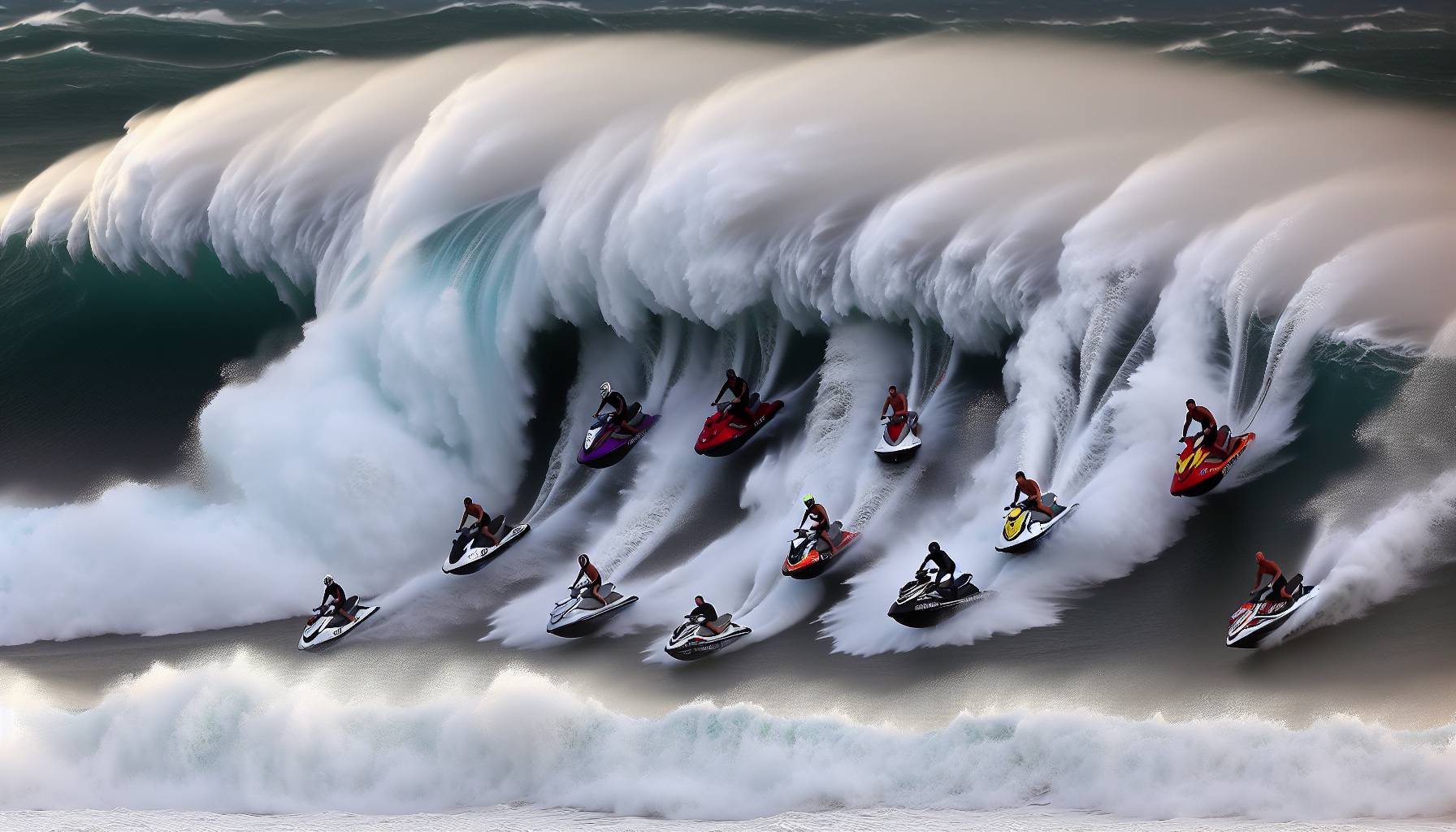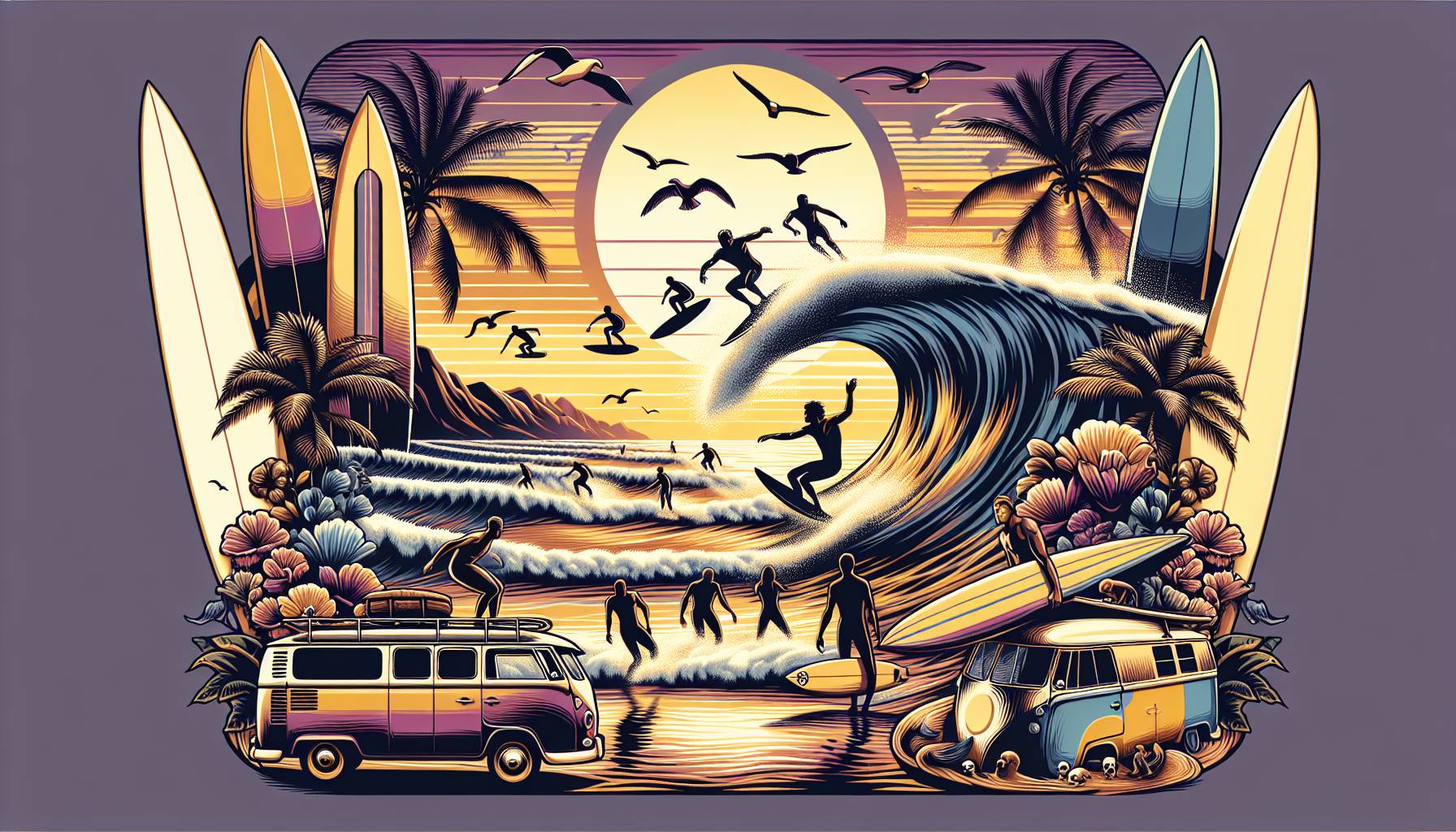
Promoting biodiversity through conservation efforts
Australia’s coastal ecosystems are home to a diverse range of marine and terrestrial species, many of which are under threat due to habitat destruction, pollution, and climate change. Conservation efforts play a crucial role in preserving this biodiversity, ensuring that future generations can continue to enjoy the natural beauty of the country’s beaches and surf breaks.
One of the key strategies in promoting biodiversity is the restoration of native vegetation along coastal dunes. These dunes act as natural barriers, protecting inland areas from erosion while providing essential habitats for wildlife. By planting native grasses and shrubs, communities can help stabilise these ecosystems and support the species that rely on them.
Marine conservation initiatives also play a significant role in protecting biodiversity. Programs focused on reducing plastic waste, preventing oil spills, and restoring coral reefs contribute to healthier ocean environments. Surfers, who spend much of their time in the water, are often at the forefront of these efforts, advocating for cleaner beaches and participating in organised clean-up events.
“Every time we paddle out, we’re entering a living ecosystem. It’s our responsibility to protect it.” – Local surfer and conservation advocate
Another important aspect of conservation is the protection of marine life, including species such as sea turtles, dolphins, and migratory seabirds. Establishing marine protected areas (MPAs) helps safeguard these creatures by limiting human activities that could disrupt their habitats. Many of Australia’s most iconic surf spots are located near MPAs, highlighting the connection between conservation and the surfing community.
By supporting conservation initiatives, surfers and beachgoers can contribute to the preservation of Australia’s unique coastal biodiversity. Whether through participating in habitat restoration projects, reducing plastic use, or advocating for stronger environmental protections, every effort helps maintain the delicate balance of these ecosystems.
Encouraging community engagement with nature
Connecting with nature is an essential part of the surfing experience, and fostering a deeper appreciation for the environment can inspire individuals to take an active role in its protection. Encouraging community engagement with nature not only strengthens conservation efforts but also enhances personal well-being and fosters a sense of responsibility for the coastal ecosystems that surfers rely on.
One way to promote this connection is through organised beach clean-ups, where local surfers and community members come together to remove litter and debris from the shoreline. These events not only improve the health of the marine environment but also serve as a reminder of the impact human activities have on coastal ecosystems. By participating in these initiatives, individuals develop a stronger bond with their surroundings and a greater commitment to preserving them.
Educational programs and workshops also play a crucial role in fostering engagement. Surf schools, environmental organisations, and local councils can collaborate to offer sessions on marine biodiversity, sustainable surfing practices, and the importance of protecting fragile coastal habitats. These initiatives help surfers and beachgoers understand the ecological significance of their favourite surf spots and encourage them to adopt more environmentally friendly behaviours.
“When people understand the role they play in protecting the ocean, they’re more likely to take action. It’s about creating a culture of respect for the environment.” – Marine biologist and surf enthusiast
Community-driven conservation projects, such as dune restoration and native tree planting, provide hands-on opportunities for individuals to contribute to the health of their local environment. These projects not only improve biodiversity but also strengthen community ties, as people work together towards a common goal. Many surf clubs and environmental groups have embraced these initiatives, recognising the importance of maintaining the natural landscapes that make Australia’s beaches so unique.
By fostering a culture of environmental stewardship, surfers and coastal communities can ensure that future generations continue to enjoy pristine beaches and thriving marine ecosystems. Encouraging people to engage with nature in meaningful ways helps build a lasting connection to the environment, inspiring ongoing efforts to protect and preserve Australia’s coastal heritage.
Sustainable practices for long-term impact
Ensuring the long-term health of Australia’s coastal ecosystems requires a commitment to sustainable practices that minimise human impact while supporting biodiversity. For surfers and beachgoers, adopting environmentally responsible habits can help preserve the natural beauty of the coastline and maintain the quality of the waves for future generations.
One of the most effective ways to reduce environmental impact is by choosing sustainable surf gear. Many traditional surfboards are made using materials that contribute to pollution and carbon emissions. Opting for eco-friendly alternatives, such as boards crafted from recycled or sustainably sourced materials, can significantly reduce waste. Similarly, using biodegradable wax and reef-safe sunscreen helps prevent harmful chemicals from entering the ocean, protecting marine life and coral reefs.
Reducing plastic waste is another crucial aspect of sustainable coastal living. Single-use plastics, such as water bottles, food wrappers, and plastic bags, often end up in the ocean, posing a threat to marine animals. Surfers can make a difference by carrying reusable water bottles, bringing their own containers for snacks, and supporting businesses that prioritise plastic-free packaging. Participating in regular beach clean-ups also helps remove existing waste and prevents further pollution.
“Sustainability isn’t just about reducing harm—it’s about actively making choices that benefit the environment. Every small action adds up.” – Environmental advocate and surfer
Energy consumption is another factor to consider when striving for sustainability. Many surf-related activities, such as travel to remote surf spots, contribute to carbon emissions. Choosing carpooling, cycling, or public transport when heading to the beach can help reduce one’s carbon footprint. Additionally, supporting surf brands and businesses that use renewable energy and ethical production methods encourages a shift towards more sustainable industry practices.
Protecting coastal habitats is also essential for long-term sustainability. Sand dunes, mangroves, and seagrass beds play a vital role in stabilising shorelines and providing habitats for marine life. Avoiding trampling on dunes, respecting designated walking paths, and participating in habitat restoration projects can help maintain these fragile ecosystems. Many surf communities have taken the initiative to plant native vegetation along coastlines, reinforcing natural defences against erosion and climate change.
By integrating sustainable practices into daily routines, surfers and beachgoers can contribute to the long-term preservation of Australia’s coastal environments. Small, conscious choices—such as reducing plastic use, supporting eco-friendly brands, and respecting natural habitats—can collectively make a significant impact. Through ongoing efforts, the surfing community can help ensure that Australia’s beaches remain pristine and thriving for generations to come.
Promoting biodiversity through conservation efforts
Alright, legends, let’s talk about keeping our backyard wild and thriving. This initiative isn’t just about planting a few trees and calling it a day—it’s about making sure our coastlines, reefs, and bushlands stay full of life for generations to come.
From restoring native habitats to protecting marine ecosystems, the focus is on giving nature a fighting chance. That means more fish in the water, healthier reefs to surf over, and bushland teeming with wildlife. And let’s be real—no one wants to paddle out over a dead reef or fish in an empty ocean.
One of the big moves is reintroducing native plant species to areas that have been hit hard by development. These plants aren’t just pretty—they provide food and shelter for local wildlife, keeping the whole ecosystem in check. Plus, they help stabilise dunes and riverbanks, which means fewer erosion issues messing with your favourite fishing spots.
Out in the water, efforts are ramping up to protect marine biodiversity. That means cracking down on pollution, restoring seagrass meadows, and making sure fish stocks stay healthy. More seagrass means more fish nurseries, and more fish nurseries mean better catches for those early morning fishing missions.
And let’s not forget about the reefs. Coral restoration projects are in full swing, helping damaged reefs bounce back from bleaching events. Healthy reefs mean better waves, more marine life, and a whole lot more stoke when you’re out in the lineup.
“If we look after nature, nature looks after us. More fish, better waves, and epic adventures—it’s a win-win.”
So whether you’re casting a line, paddling out, or just soaking up the great outdoors, these conservation efforts are making sure there’s plenty of nature left to enjoy. And hey, if you can lend a hand—why not? Every little bit helps keep the wild, well… wild.
Encouraging personal connections with nature
Alright, time to get amongst it—because this isn’t just about saving nature, it’s about living it. There’s nothing quite like the feeling of being out in the elements, whether you’re chasing waves, casting a line, or trekking through the bush. This initiative is all about getting more people to ditch the screens and reconnect with the wild.
One way they’re making that happen is by setting up community events that bring people face-to-face with nature. Think guided bushwalks, citizen science projects, and even surf clean-ups where you can do your bit while scoring a few waves. It’s about making conservation something you can feel, not just read about.
For the fishos, there are workshops on sustainable fishing practices—because let’s be honest, no one wants to be the bloke who wipes out a whole spot by taking more than their fair share. Learning how to fish responsibly means better catches for everyone and a healthier ocean for the future.
And for the groms and young adventurers, there are programs designed to get kids out of the house and into the wild. Whether it’s learning to surf, spotting wildlife, or planting trees, these experiences create a lifelong love for the outdoors. After all, the next generation of surfers, fishers, and explorers need a playground that’s still thriving.
“The more time you spend in nature, the more you respect it. And let’s be real—nothing beats the feeling of a perfect wave or a solid catch.”
So whether you’re paddling out at sunrise, hiking through the bush, or just kicking back by the water, this is your chance to be part of something bigger. Get out there, get involved, and let nature do what it does best—blow your mind.

